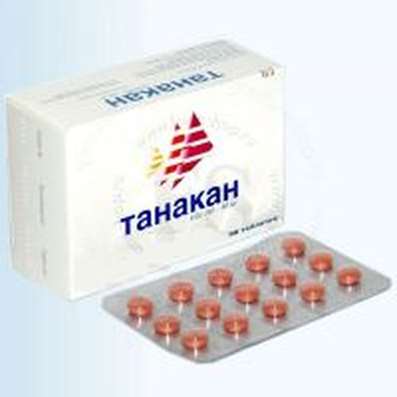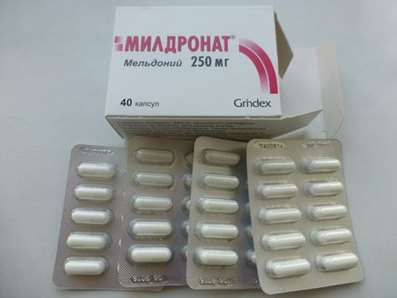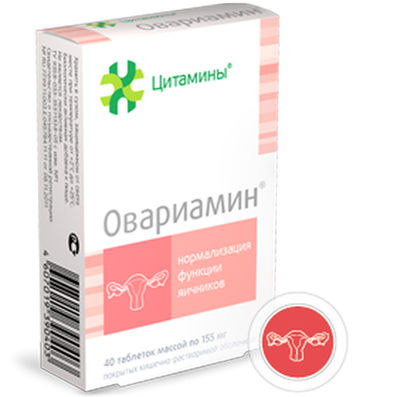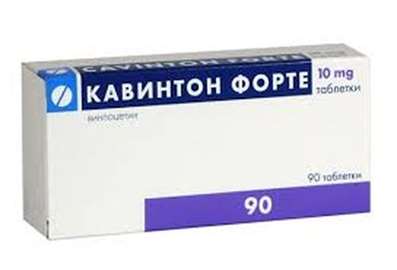Instruction for use: Streptokinase
I want this, give me price
Trade name of the drug – Streptokinase, Awelysin Braun, Streptase, Thromboflux, Heberkinase (recombinant streptokinase)
The Latin name of the substance Streptokinase
Streptokinasum (genus. Streptokinasi)
Chemical name
Enzyme protein from the culture of various strains of Streptococcus haemolyticus with a molecular weight of about 5000 daltons; Is available as a lyophilized white powder
Pharmacological group:
Fibrinolytics
The nosological classification (ICD-10)
H34 Vascular occlusion of retina: Arterial thrombosis of the vessels of the eye; Venous thrombosis of the vessels of the eye; Violation of retinal circulation; Disturbances of intraocular circulation; Insufficient blood supply to the mesh and choroid; Occlusion of central retinal vessels; Acute obstruction of retinal arteries; Subacute and chronic circulatory insufficiency in the retina or in the choroid of the eye; Vascular diseases of the retina; Vascular disorders in the retina of the eye; Vascular thrombosis of the retina; Central retinal vein thrombosis; Thrombosis of the central vein of the retina and its branches; Thrombosis of the central vein of the retina of the eye and its branches
I21 Acute myocardial infarction: Myocardial infarction in the acute phase; Acute Myocardial Infarction; Myocardial infarction with pathologic Q wave and without; Myocardial infarction complicated by cardiogenic shock; Infarction left ventricular; Transmural myocardial infarction; Myocardial infarction netransmuralny (subendocardial); Netransmuralny myocardial infarction; Subendocardial myocardial infarction; The acute phase of myocardial infarction; Acute myocardial infarction;Sub-acute phase of myocardial infarction; Subacute phase of myocardial infarction; Thrombosis of the coronary arteries (the arteries); Threatened myocardial infarction; Myocardial infarction without Q wave
I26 Pulmonary embolism: Recurrent thromboembolism of the pulmonary artery; Recurrent pulmonary embolism; Thromboembolism of the branches of the pulmonary artery; Thromboembolism of the lungs; Thromboembolism of the pulmonary artery (PE); Thrombosis of the pulmonary artery; Thromboembolism; Thromboembolism of the pulmonary artery; Thromboembolism; Pulmonary embolism; Thromboembolism of the pulmonary artery and its branches; Thromboembolism of pulmonary vessels; Embolism of the lung; Embolism of the pulmonary artery; Acute massive thromboembolism of the pulmonary artery
I74 Embolism and arterial thrombosis: Thrombosis of effort (stress); Arterial thrombosis; Arteriothrombosis; Subacute and chronic arterial thrombosis; Subacute thrombosis of peripheral arteries; Postoperative thrombosis; Vascular thrombosis; Vascular embolism; Thrombosis of aortocoronary shunt; Arterial thrombosis; Thrombosis of arteries; Coronary artery thrombosis; Coronary thrombosis; Thrombosis of blood vessels; Thrombosis with ischemic stroke; Thrombosis with general surgical operations; Thrombosis in Oncology Operations; Vascular thrombosis; Thrombus formation in the postoperative period; Thrombotic complications; Thromboembolic diseases; Thromboembolic syndrome; Thromboembolic complication in the postoperative period; Thromboembolism of arteries; Partial vascular thrombosis; Embolism; Embolism of arteries
I77.1 arteriostenosis: Occlusive arterial disease; Peripheral arterial occlusive disease;Peripheral arterial occlusive disease in stages III-IV on Fontaine
I82 Embolism and thrombosis of other veins: Recurrent venous thrombosis; Postoperative thrombosis; Venous thrombosis; Acute venous thromboembolism; Recurrent vein thrombosis; Venous thrombosis; Thrombosis of veins of internal organs; Venous thrombosis; Deep vein thrombosis; Thrombosis of blood vessels; Vascular thrombosis; Thrombosis of veins; Deep vein thrombosis; Thromboembolic diseases; Thromboembolism of veins; Severe venous thrombosis; Embolism; Embolism of veins; Thromboembolic complications
R07.2 Pain in the heart: neuroses of the heart; Myocardial ischemic pain; Pain syndrome in myocardial infarction; cardialgia; cardioneurosis; Cardiac syndrome; Pain in cardiac patients; Cardialgia on background dyshormonal myocardial dystrophy; Functional cardialgia; Psevdostenokardiya; pericardial pain
Pharmacology
Mode action - Fibrinolytic.
Activates fibrinolysis. Interacts with plasminogen (profibrinolysin), forms an "activator complex", which catalyzes the transformation of blood plasma plasminogen and blood clots into plasmin (fibrinolysin). Plasmin, possessing proteolytic enzymatic activity, causes lysis of fibrin strands of blood clots, degradation of fibrinogen and other plasma proteins, incl. V (Actselerin) and VII (Convertin) coagulation factors. Dissolves thrombi, acting both on their surface and from the inside. The most effective for fresh clots of fibrin (before retraction); Restores the patency of thrombosed blood vessels. It is inactivated by circulating antibodies. Therapeutic doses provide the necessary fibrinolytic activity. With IV infusion, the plasma fibrinogen level decreases within 24-36 h and correlates with a decrease in blood viscosity and platelet aggregation. The effect reaches a maximum after 45 minutes, and hyperfibrinolysis, gradually decreasing, persists for several hours, the thrombin time remains prolonged for another 24 hours due to an increase in the number of circulating degradation products of fibrinogen and fibrin.
T1 / 2 after iv injection 1500000 IU - 1 h, streptokinase-plasminogen complex - about 23 min. The complex is inactivated (in part) by anti-streptococcal antibodies formed by plasmin-circulating in the plasma inhibitors, incl. Inhibitor of alpha-2-plasmin and alpha-2-macroglobulin. Biotransformiruetsya in the liver, by hydrolysis (metabolites are not identified). It is excreted in a small amount by the kidneys. With liver diseases, the clearance is slow; Renal failure does not affect clearance.
In conditions of IV infusion reduces blood pressure and OPSS, followed by a decrease in cardiac output and improved left ventricular function (in the case of congestive heart failure); Increases the number of collaterals, reduces the incidence of death in myocardial infarction and episodes of retrosternal pain. With intracoronary injection, thrombolysis occurs after 1 hour; Improving the functional parameters of the heart, reducing the number of thrombotic obstructive disorders and deaths from pulmonary embolism.
Application of the substance Streptokinase
Acute myocardial infarction (within the first 12 hours), thromboembolism of the pulmonary artery and its branches, arterial thrombosis (acute, subacute and chronic), thrombosis of peripheral arteries, thrombosis due to diagnostic and therapeutic procedures in children, incl. With catheterization in newborns, thrombosis of hemodialysis shunt, thrombosis with prosthetic heart valves; Chronic obliterating endarteritis, chronic occlusive arterial diseases, retrombosis after vascular surgery, obliteration of the arteriovenous shunt, occlusion of the central retinal vessels), vein thrombosis (acute deep vein thrombosis of the extremities and pelvis, thrombosis of subclavian veins or veins of internal organs, retrothrombosis after vascular surgery) , Rinsing in / in the catheters, incl. For hemodialysis; Mono- or combined therapy of rest angina (with acute myocardial infarction).
Contraindications
Hypersensitivity, bleeding (acute, recent, internal), hemorrhages and a high risk of their occurrence (within 2 months after cerebral circulation, intracranial or spinal surgery, within 10 days after delivery, arterial punctures, intravenous injections , Organ biopsies, trauma, including craniocerebral), recent multiple injuries, tumors with a tendency to bleeding, brain tumors or metastasis in the central nervous system, erosive-ulcerative gastrointestinal lesions with bleeding after 6 months and chronic inflammatory diseases of the colon, including ulcerative colitis, acute pancreatitis, severe uncontrolled hypertension (blood pressure more than 200/110 mm Hg), aneurysm, mitral heart defects with atrial fibrillation, acute pericarditis, subacute bacterial endocarditis , Hemorrhagic diathesis and other hemostasis defects, severe diabetic retinopathy, active form of tuberculosis, etc. lung diseases accompanied by cavity formation, sepsis or septic thrombosis, postoperative (3-6 weeks, especially 8-12 days after extended surgical operations), within 4 weeks after the translumbral arteriography, 3 months after an acute hemorrhagic stroke; The first 18 weeks of pregnancy or pathology of pregnancy with an increased risk of bleeding (placenta previa, etc.).
Side effects of the substance Streptokinase
Bleeding: from the places of introductions and incisions, gums, liver, gastrointestinal, urogenital, retroperitoneal, etc .; Rupture of the spleen, hemorrhage: dermal, subcutaneous, pericardial (up to the rupture of the myocardium), brain (fatal), hematoma; reperfusion arrhythmia (myocardial infarction), non-cardiogenic pulmonary edema (intracoronary administration in myocardial infarction), embolism (due to thrombus mobilization or fragmentation), including: pulmonary artery (deep vein thrombosis), arterial distal sections (cholesterol embolization during local thrombolysis in peripheral arteries), embolic stroke, increased erythrocyte sedimentation rate; With repeated administration - in the plasma, an increase in the level of bilirubin, the activity of AST, ALT, gamma-glutamyltranspeptidase, alkaline phosphatase, creatine kinase, decreased cholinesterase, allergic and anaphylactoid reactions (especially with rapid administration): skin rash, urticaria, generalized exanthema, itching, redness , dyspnea, bronchospasm, nausea, vomiting, fever, chills, headache, pain in the spine and muscle bradi- or tachycardia, decrease blood pressure, arthritis, vasculitis (including hemorrhagic), nephritis, polyneuropathy, peri- rbitalny and angioneurotic edema, anaphylactic shock, and others.
Interaction
Heparin, coumarin derivatives, dipyridamole, NSAIDs, incl. Acetylsalicylic acid, dextrans, valproic acid increase the anti-coagulant effect and increase the risk of bleeding. Incompatible with plasma-substituting solutions - hydroxyethyl starch and dextran.
Overdose
Symptoms: increased side effects, most often bleeding.
Treatment: with massive or uncontrolled internal bleeding - stopping bleeding (if possible), the appointment of antifibrinolytic agents (tranexamic acid, paraaminomethylbenzoic acid, kallikrein or protease inhibitors, including aprotinin - at an initial dose of 500,000 KIE, then - 50000-100000 KIE / H iv drip - with massive bleeding, aminocaproic acid - 5 g for 1 h, then 1 g / h for 4-8 h to achieve the effect - with internal bleeding), replacement of blood loss (except dextran and hydroxyethylated Starch). Symptomatic treatment: with bradycardia - the introduction of atropine, arrhythmia - antiarrhythmic drugs, ventricular fibrillation - defibrillation, allergic reactions - appointment of glucocorticoids, fever - paracetamol, severe hypotension due to rapid administration - reduced infusion rate, elevated lower body position, appointment of vasoconstrictors. All activities are carried out against the background of the abolition of streptokinase.
Routes of administration
IV by drop infusion, if necessary - intracoronary or intraarterial.
Precautions for the substance Streptokinase
Short-term lysis is controlled by determining thrombin or partial thromboplastin time, indicators should be at least 2-4 or 1.5-2.5 normal values, respectively. Long-term thrombolysis is assessed by the thrombin time, which increases 2-4 times 6-8 hours after the onset of lysis; In case of increase more than 4 times, the dose is reduced by 2 times.
With special care apply for severe violations of liver and kidney function, diabetes mellitus, bronchial asthma, streptococcal infection, including rheumatism, haemoptysis, esophageal veins, recent appointment of anticoagulants, conditions after cardiopulmonary resuscitation (including indirect cardiac massage), IVL (intubation), bleeding, accompanying urological diseases, incl. Urolithiasis, chronic gastrointestinal diseases, menorrhagia, menstrual bleeding, earlier (from 5 days to 1 year) course of treatment with streptokinase, in the senile age (over 75 years).
Before the introduction, if in the anamnesis the titer of anti-streptokinase antibodies, incl. In children (which is possible in the period from 5 days to 12 months after the first application or after a streptococcal infection: pharyngitis, rheumatism, glomerulonephritis, etc.), a test for sensitivity to streptokinase is carried out. In newborns and premature babies, an ultrasound scan of the skull is recommended. At the beginning of the course, infusion is performed at a low rate, it is possible to prescribe antihistamines and glucocorticoids to prevent allergic reactions. Before and during therapy, thrombin, partial thromboplastin and prothrombin time, and fibrinogen levels are determined every 4 hours. Patients with deep vein thrombosis receiving streptokinase should not stop taking contraceptives. If it is necessary to puncture the vessel during intravenous infusion, it is preferable to select the vessels of the upper extremities (with the subsequent application of a pressure bandage for 30 minutes (not less).) To avoid retromboses after each course, additional appointment of anticoagulants (heparin 500-1000 IU / h, then derivatives Coumarin) or antiplatelet agents (especially acetylsalicylic acid), systemic use is not recommended for myocardial infarction after 24 hours or more, with deep vein thrombosis - 14 days or more, with retinal vascular thrombosis: 6-8 hours or more, venous - 10 days or more, with chronic occlusions of the arteries, including obliterating endarteritis - 6 weeks or more.
Special instructions
The finished solutions are used for 12 hours (no more).

 Cart
Cart





